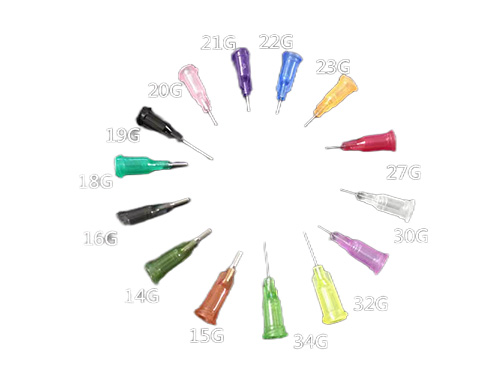Mastering These Knowledge Points of Seedling Trays to Embark on a Professional Seedling Cultivation Journey
2025-04-26 04:58:22
I. Introduction
Seedling trays are the "cornerstone of seedling cultivation" in modern horticulture and agriculture. From beginners to advanced practitioners, knowledge accumulation directly determines the effectiveness of seedling cultivation. This article systematically outlines the core essentials to help you quickly acquire professional seedling cultivation skills.
II. Basic Understanding of Seedling Trays: From Definition to Evolution
2.1 Precise Definition
Seedling trays are standardized partitioned containers that enable centralized seed cultivation through individual cells, offering functions such as root control, moisture retention, and disease isolation.
2.2 Technological Evolution
From traditional wooden shallow trays to modern PP plastic cell trays, materials have upgraded towards durability and environmental friendliness. Structural innovations include deep-hole trays and air-pruning trays, tailored for diverse seedling cultivation scenarios.
III. Core Value of Seedling Trays: Enhancing Efficiency and Quality
3.1 Scalable Efficiency
Uniform specifications accommodate sowing machines and transplanting equipment, saving labor through batch operations. Partitioned designs simplify sorting processes and shorten the seedling cultivation cycle.
3.2 Health Guarantees
Independent cells isolate pathogens, deep trays guide vertical root growth, reducing entanglement and disease risks. Breathable materials maintain stable rhizosphere microenvironments.
3.3 Intelligent Management
Stackable and movable features facilitate temperature and humidity control. Partitioned structures support classified maintenance of seedlings, precisely matching growth needs.
IV. Selection Guide: Three Key Dimensions for Professional Selection
4.1 Crop Adaptation Rules
·Vegetable seedlings: Deep-rooted plants (e.g., tomatoes, okra) require deep-partitioned trays; shallow-rooted leafy greens use general shallow trays.
·Flower seedlings: Small-flowered herbs are suited to small-cell trays (72-128 cells), while large-flowered plants need large-aperture deep trays.
4.2 Budget Balancing Strategies
·For short-term use, choose PS foam trays (lightweight and inexpensive).
·For long-term investment, prioritize PP plastic trays (durable and reusable).
4.3 Quality Standards
·Uniform substrate thickness with no noticeable indentation upon pressing.
·Appropriate drainage hole density (≥3 holes per cell) and a 2-3mm aperture to prevent clogging.
V. Full Process of Use: Professional Operation Details
5.1 Preparation Phase
·Triple-step disinfection: Soft brush cleaning → 30-minute bleach soak → sterile cloth drying.
·Customized substrate: Adjust the general formula (peat moss + vermiculite + perlite) as needed, adding leaf mold for acid-loving plants.
5.2 Sowing Key Points
·Depth rule: Cover large seeds with 2x their diameter in soil; lightly press small seeds into the substrate.
·Density control: 1-2 seeds per cell to avoid overcrowding and leggy growth.
5.3 Seedling Management
·Light and temperature precision: Warm-loving plants at 20-25°C with 6-8 hours of daily light.
·Watering and fertilization strategy: Balanced fertilizer initially, focusing on phosphorus and potassium during hardening-off; water when the substrate is dry.
VI. Maintenance: Scientific Solutions to Extend Lifespan
6.1 Cleaning and Disinfection Cycle
Rinse off residual substrate immediately after use and thoroughly disinfect after each batch to prevent pathogen circulation.
6.2 Professional Storage
·Stack with soft paper padding to prevent deformation; store deep trays vertically.
·Keep in a dry, light-protected area away from fertilizers and pesticides.
VII. Common Issues: Professional Solutions
7.1 Leggy Seedlings
Increase light duration, reduce nighttime temperatures, control watering, and apply growth retardants if necessary.
7.2 Disease Prevention and Control
Strictly follow disinfection procedures, isolate infected plants, and use targeted fungicides (e.g., Hymexazol for damping-off).
7.3 Poor Root Development
Check substrate aeration and drainage holes, adjust formulas or replace trays, and apply bio-fungicides to improve rhizosphere conditions.
VIII. Conclusion: Knowledge Empowers, Seedling Cultivation Advances
From fundamental principles to practical details, professional seedling cultivation begins with a deep understanding of seedling trays. Mastering the key points in this article will equip you with systematic seedling cultivation capabilities, enabling you to easily tackle various planting challenges. Take action now and embark on your professional seedling cultivation journey with knowledge!

It adopts electrical integration and can be started by pressing the fully automatic button ...

The XP750 seeder has stable performance, excellent product quality, simple and convenient o...

It adopts electrical integration and can be started by pressing the fully automatic button ...

Needle list Seed nozzle model Different models Sowing types are different...



